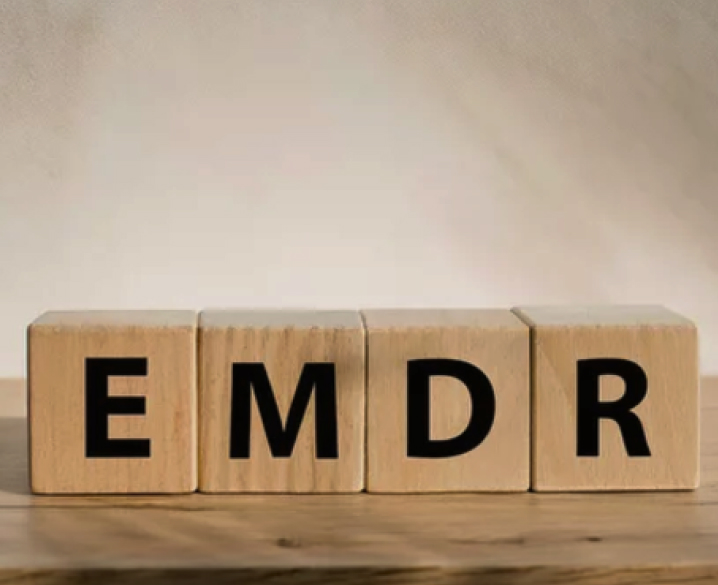Guiding You Toward Healing: Overcome Trauma with EMDR Therapy
Experience face-to-face therapy in a comfortable and private setting, ideal for a more personal connection.
Access convenient and flexible therapy from anywhere, ideal for busy schedules or remote living.

Eye movement desensitization and reprocessing, commonly called EMDR, is an alternative form of therapy often used for past trauma.
While this therapy isn’t as old as some techniques, it has been becoming more popular as people talk about its benefits.
Rather than treating mental illness with medication or traditional therapy, EMDR works differently. Instead, a patient’s rhythmic and quick eye movements are used to help them recover from trauma of all kinds. For example, it’s commonly used with PTSD (posttraumatic stress disorder) from experiences like vehicle accidents, physical assault, rape, or military combat.
EMDR was developed in 1989 by Francine Shapiro and is used by tens of thousands of professionals today. The inception of EMDR occurred when Shapiro was taking a walk and realized that quick movements of her eyes made negative emotions lessen. When used on patients, the same results occurred.

EMDR helps by having you make eye movements while thinking about a traumatic event as a way to help you eliminate painful memories.
The bilateral stimulation used during EMDR gives you a point of focus as you think about unwanted thoughts and painful experiences from the past. Over time, this can make the memories less uncomfortable, so you can properly process them without intense mental discomfort.
Eye Movement Desensitization and Reprocessing (EMDR) is an evidence-based therapy designed to help people heal from distressing experiences and trauma. It can benefit individuals struggling with:
EMDR is effective for those who feel stuck in past experiences that continue to affect their emotions, thoughts, and behaviors. It helps reprocess memories so they no longer feel overwhelming, fostering healing and resilience.
In an EMDR session, your therapist helps you process distressing memories using bilateral stimulation (eye movements, tapping, or sounds). You briefly recall the memory while focusing on the stimulation, allowing your brain to reprocess it so it feels less overwhelming. Over time, this reduces emotional distress and reinforces healthier beliefs.
The number of EMDR sessions needed varies based on the type and complexity of trauma.
Your therapist will tailor treatment to your needs, adjusting the pace to ensure a safe and effective healing process.
Yes, EMDR therapy is safe when conducted by a trained professional. It is an evidence-based approach that helps the brain process trauma in a structured way. However, because EMDR brings up distressing memories, some people may experience temporary emotional discomfort between sessions.
For those with complex trauma or dissociation, EMDR is adapted to ensure stability and safety, often incorporating grounding techniques before deeper trauma processing. Your therapist will guide you at a manageable pace to support healing without overwhelming you.
Unlike traditional talk therapy, which focuses on discussing and analyzing experiences, EMDR helps the brain reprocess distressing memories directly through bilateral stimulation (eye movements, tapping, or sounds). This allows emotional healing without needing to talk in detail about the trauma.
Key differences:
EMDR is especially helpful for those who feel stuck in past trauma or find talking about it too overwhelming.
Yes, absolutely EMDR therapy can be done online and is just as effective as in-person sessions when conducted by a trained therapist. In virtual EMDR, bilateral stimulation is provided through:
Your therapist will ensure a safe, supportive environment and teach grounding techniques to help manage emotions between sessions. Online EMDR is a great option for those who prefer the comfort of their own space or have limited access to in-person therapy.
No, you do not need to relive your trauma in detail during EMDR therapy. The beauty of EMDR is that it focuses on reprocessing distressing memories without requiring you to describe them extensively. You will briefly recall the memory while engaging in bilateral stimulation (eye movements, tapping, or sounds), allowing your brain to process it in a way that reduces its emotional intensity.
Your therapist will guide you at a safe pace, ensuring that you do not feel overwhelmed. The goal is to help your brain release the trauma’s emotional charge, so it no longer feels as distressing or intrusive.
visibility_offDisable flashes
titleMark headings
settingsBackground Color
zoom_outZoom out
zoom_inZoom in
remove_circle_outlineDecrease font
add_circle_outlineIncrease font
spellcheckReadable font
brightness_highBright contrast
brightness_lowDark contrast
format_underlinedUnderline links
font_downloadMark links